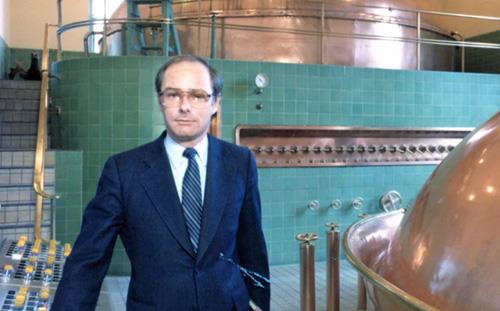
The import series The Suspect proves real life can give us a murder mystery as complex as the scripted kind.
The Suspect, a Canadian series that becomes available Tuesday on the streaming service Sundance Now, spends four episodes examining the legal dance triggered by the death of Robert Oland (top).
Robert Oland may not be a familiar name in the U.S. He's a very familiar name in far Eastern Canada, where the Oland family has run the famous Moosehead brewery for a century and a half.
Robert Oland was mostly retired as he approached 70 in the summer of 2011. But he still sometimes went to the office, and one morning he was found on the floor of that office, dead in a pool of blood.
The blood had spattered some nine or 10 feet, and the damage to the late Richard Oland's head was such that it was clear someone was trying to beat him to a pulp.
The savagery of the crime and the prominence of the Oland family made his death a front-page story for years around the town of St. John.
For the local police, it was no whodunit. From the beginning, investigators pointed to Dennis Oland, Robert's son, and while Dennis wasn't arrested for two years, that was purely a forensic lag. No other suspect was seriously considered.
A jury convicted Dennis Oland of second-degree murder in 2015, sending him to prison for life with a 10-year wait for parole eligibility.
Ten months later, an appeals court ruled the trial judge had erred in his instructions to the jury. So Dennis was out, and preparations began on each side for a retrial. That chess match is the focus of The Suspect.
The Crown, Canada's prosecuting entity, built what it considered an overwhelming circumstantial case.
As the Crown painted the picture, Dennis Oland, deep in debt from financing an aristocratic though not extravagant life, had asked his father for money and been turned down, sending him into the rage that left Robert Oland beaten to death.
Dennis admitted he and his father had often had a difficult relationship, with Robert Oland demanding a level of achievement almost no son could have delivered. Dennis insisted that despite this, he did not hate his father and certainly had not killed him.
With no witnesses, confession, or murder weapon, the Crown convinced the initial trial jury by arguing no one else could have done it. There were no signs of forced entry to the office, and nothing had been taken. For motive, there was Dennis's sizeable debt, and for evidence, there was a brown jacket that Dennis had been wearing the day of the murder. It was found in his closet, recently dry-cleaned but with trace signs of bloodstains. He had also initially told police he was wearing a blue jacket that day.
Dennis's legal team put their chips on "reasonable doubt," arguing that the police had botched the investigation by failing to do things like secure the crime scene or dust doors for fingerprints. By zeroing in on Dennis as their only suspect, his lawyers argued, they had let any other possible perp skate free.
For the retrial, Dennis's lawyers doubled down, hiring teams of investigators to find any possible evidence that could cloud the Crown's case.
From the moment Dennis was unofficially identified as the primary person of interest, there had been a swell of public opinion against him. Here, the social media posts went, was a spoiled rich kid who might get away with murder because he could hire an expensive bunch of lawyers.
This sentiment continued during preparations for the retrial, to the extent that Dennis's attorneys argued they could not find an untainted jury pool and therefore requested a trial by judge only.
The Crown opposed this request, and The Suspect spends interesting chunks of time on this sort of legal byplay.
Had the Oland murder occurred in the U.S., it would have been a sensation. As it was, the sensation was confined mainly to Canada.
That doesn't make the case itself any less interesting, or sordid, nor does it make issues like the equity of justice any less relevant.
As directed by Deborah Wainwright, The Suspect lays those issues out like a compelling murder mystery, which is exactly what this real-life case turns out to be.